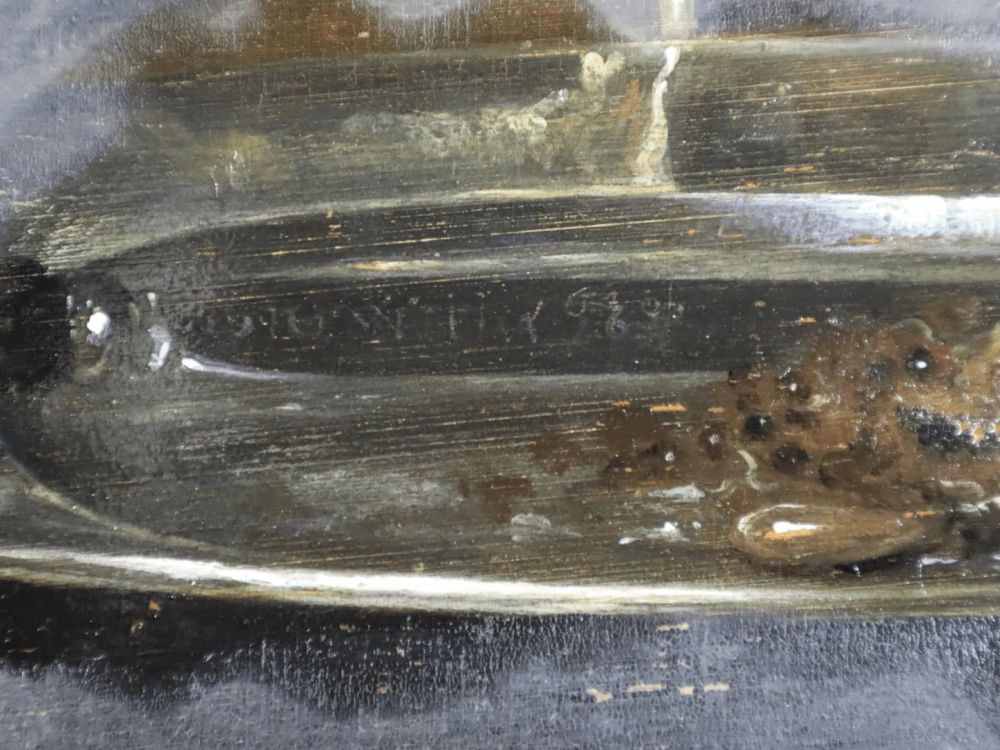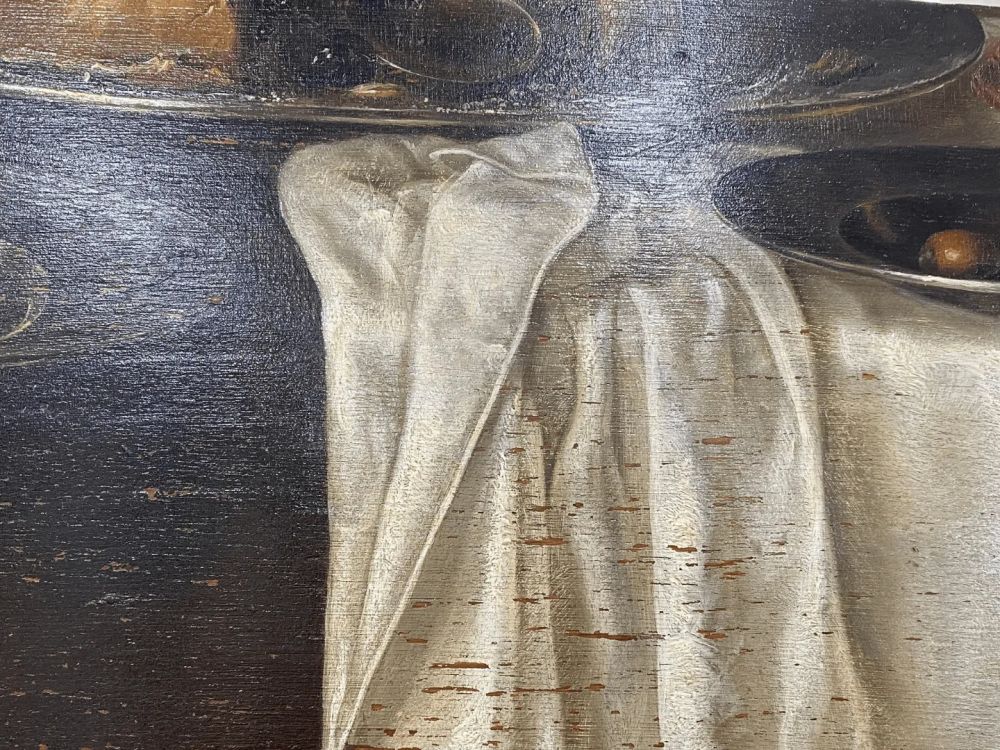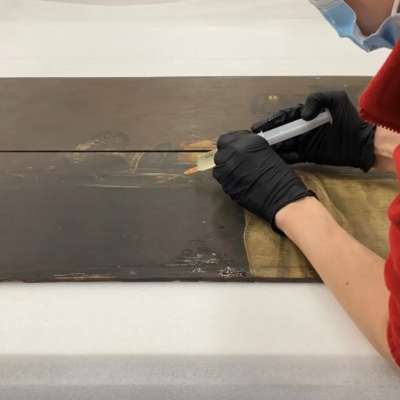Condition
Provenance
The artwork was delivered to International Conservation Services (ICS) laboratories for condition assessment, analysis, and treatment in preparation for exhibition display. It was with a sense of excitement that the painting was inspected by the conservators as the style and materials all pointed to the panel being a 17th Century Dutch Panel painting in the style of the Dutch Old Master, Willem Heda.
Heda was known to hide his signatures within the painting in discreet locations, and a thorough search was undertaken to no avail. The layers of dust and grime, plus an aged, discoloured varnish were hampering search efforts. Conservator Claire Heasman expertly cleaned the painting and carefully removed the varnish layer. Another search for the signature under the microscope was undertaken and finally the signature and date was found, discreetly written on the blade of the knife. To make things more confusing, not one, but 2 signatures were found on top of each other. Father Willem and son Gerrit Heda, 1740.
The world expert in Dutch panel paintings of this period, Fred Meijer was sought out and contacted. And after some months the painting was authenticated as being a genuine Gerrit Heda, painted when the artist was very young, probably no more than 17 years old.
Gerrit Willemz Heda was the son of the most famous of Dutch 17th Century still life painters Willemz Claesz Heda. Gerrit painted in the style of his father but due to an early death at the age of 25 his career was a short one. His signature is very similar to his father’s and his paintings were attributed to his father until 1945.
This brilliant result has changed the painting from a merely a beautiful painting, to a jewel in the National Trust Collection of major international and historical significance. How the painting came to be a part of the collection is a mystery still under investigation.
Treatment
Condition
The painting was split in two, with flaking paint and the image obscured by a heavy layer of grime.
The challenging conservation treatment was completed by the team of experts at ICS. Oliver Hull carefully re-joined the broken and warped oak panels. The re-joining was challenging because the bowing of the wooden panels meant that the picture no longer aligned exactly. Careful location, relaxation and co-ersion of the panels was required to make the joining of the panels visually acceptable for the viewer and prevent mis-alignment.
Once the panels were joined, Senior Paintings Conservator, Claire Heasman then completed her meticulous stabilisation of the paint layer. Then she filled the area of loss to the original surface depth and texture which allowed her to re-create the painted finish where lost, perfectly mimicking the style and technique of the Dutch Master himself in modern reversible pigments and resin.
On completion, the painting was framed in a reproduction Dutch frame of the correct period and style.
This conservation treatment took approximately one year to complete and involved a team of experts to achieve best conservation outcomes for the painting. Considerable and passionate debate around the ethics of the treatment (essentially how much intervention was justified) has resulted in a well thought out and justifiable conservation outcome. Due to the dedication and persistence of the conservation team, a significant highlight of the treatment was to discovery of the original signature resulting in definitive attribution and dating of the painting.
Timber Panels
- The adhesive used to join the two oak timber panels had failed, resulting in a split composition
- Both sections of the oak timber had independently bowed
- There were some losses in the oak timber
- Heavy surface dirt was visible
Media
- Some of the painted media was unstable in areas, particularly along the wood grain
- Numerous paint losses were visible throughout the composition
- The varnish had discoloured considerably, giving the composition a yellow/brown hue
- A past restoration treatment was visible, including consolidation and heavy overpaint
- Heavy surface dirt and grime was visible
Frame
- The current frame was found to be in poor condition, with major losses and cracking moulding
Treatment
- High resolution images and signature analysis
- Artwork dry cleaned and aqueous cleaned
- Varnish removed and coating applied to saturate composition
- Losses in-filled
- Timber panels re-joined
- Retouching using Gamblin conservation colours
- Artwork reframed into new frame in keeping with the painting’s origin and date
Before treatment
After treatment








